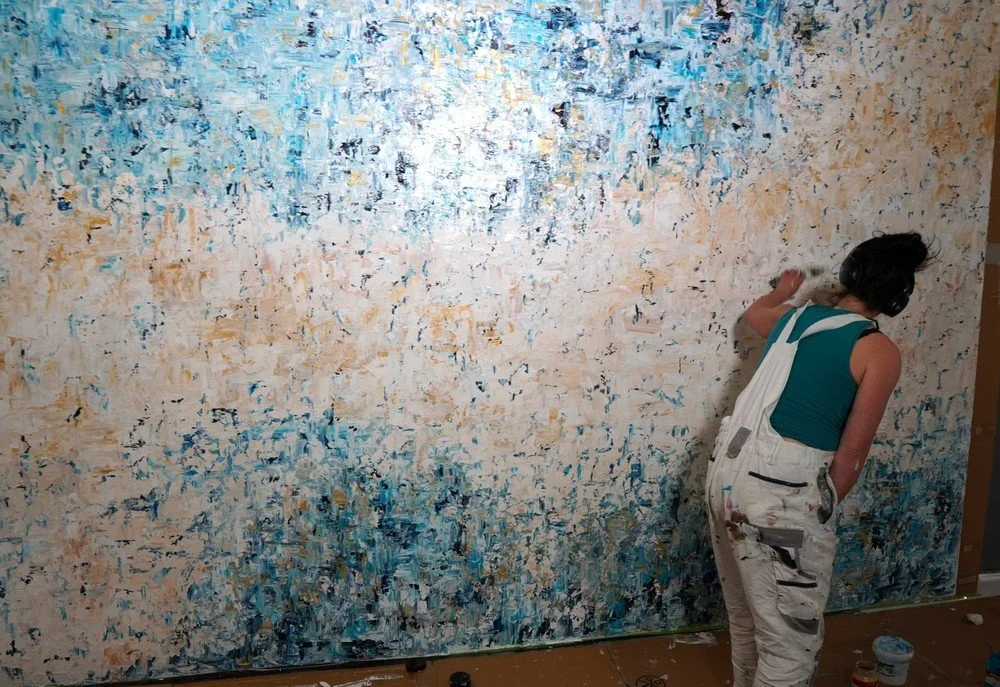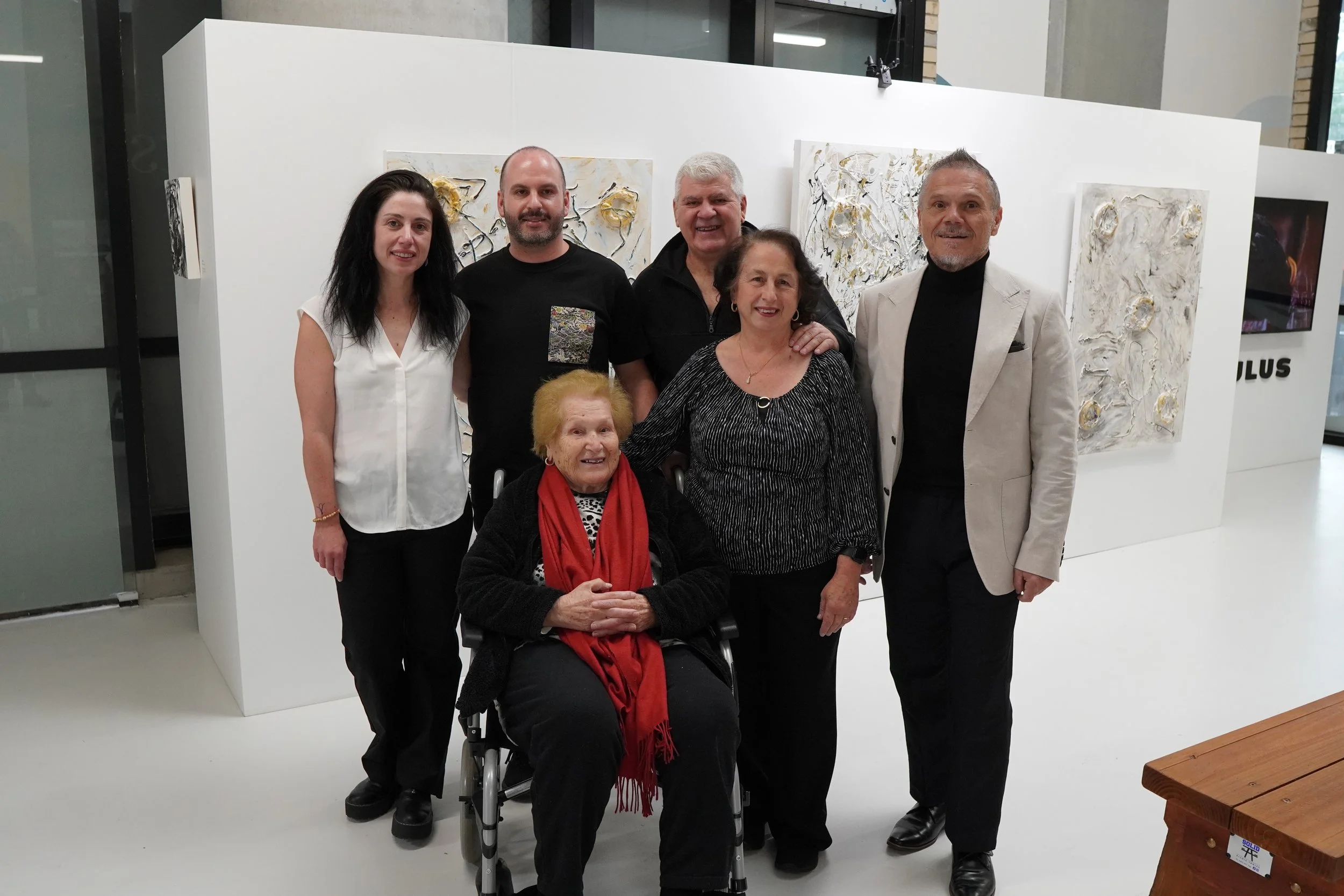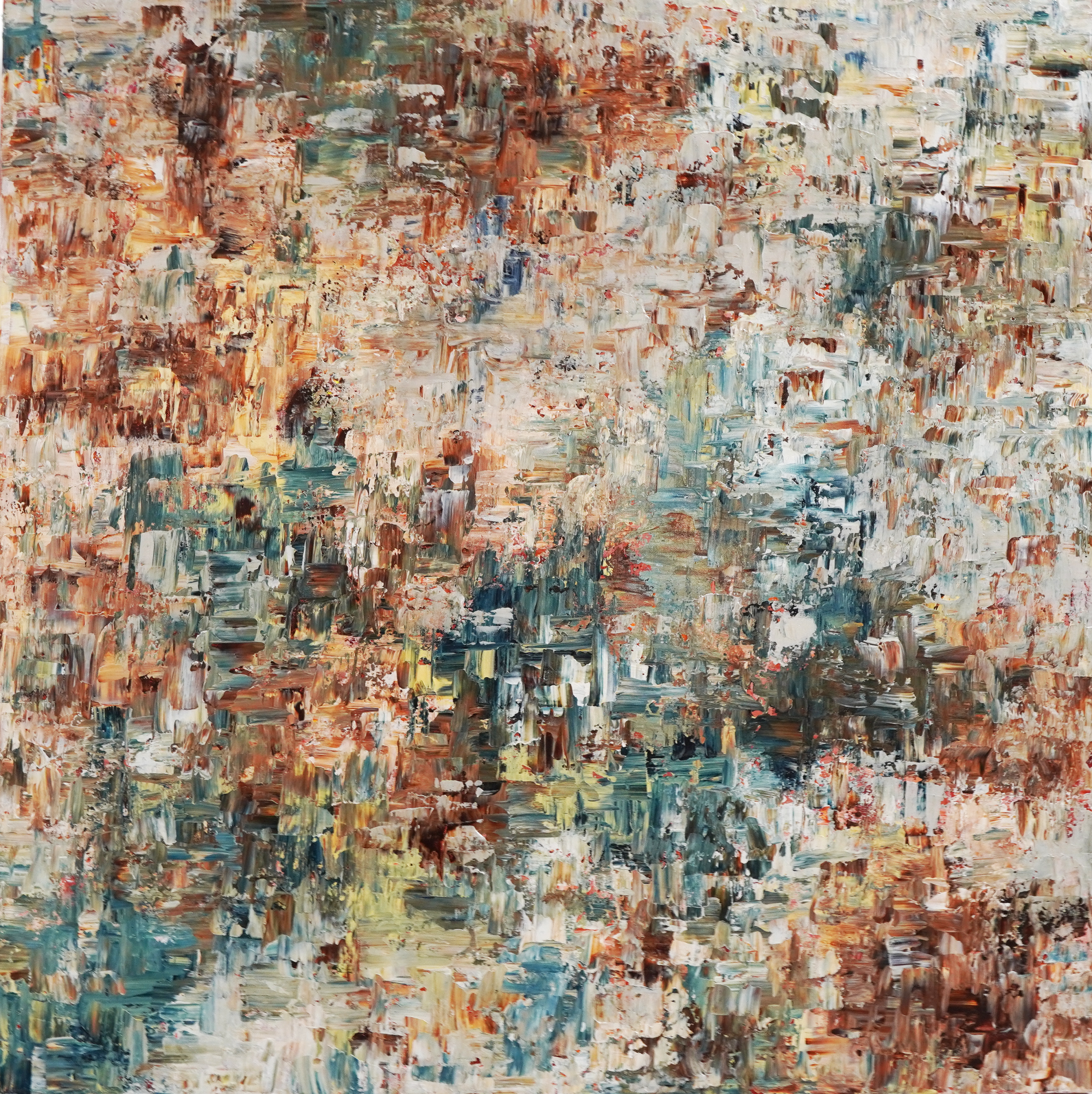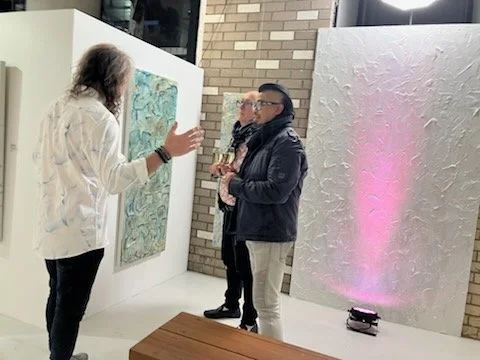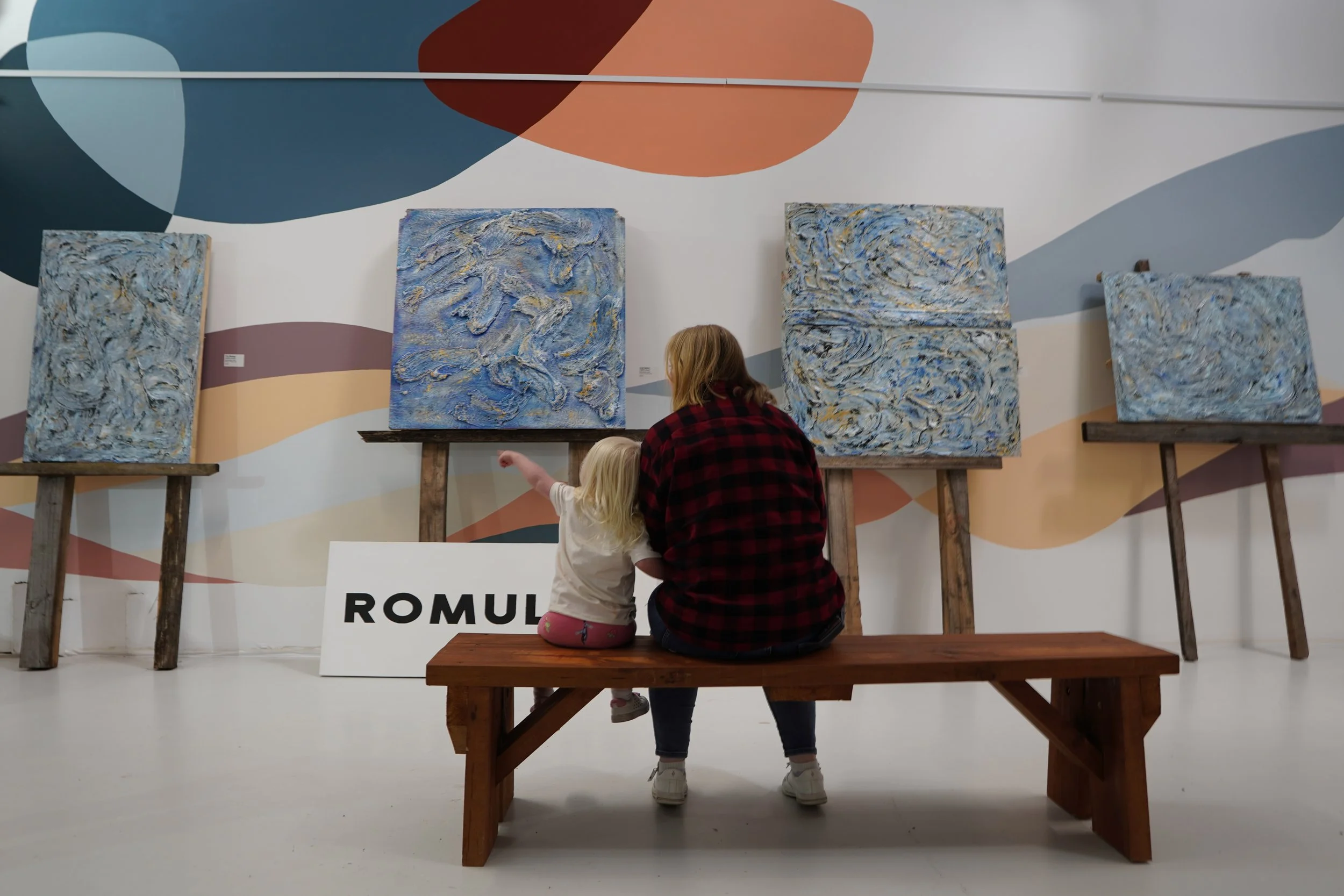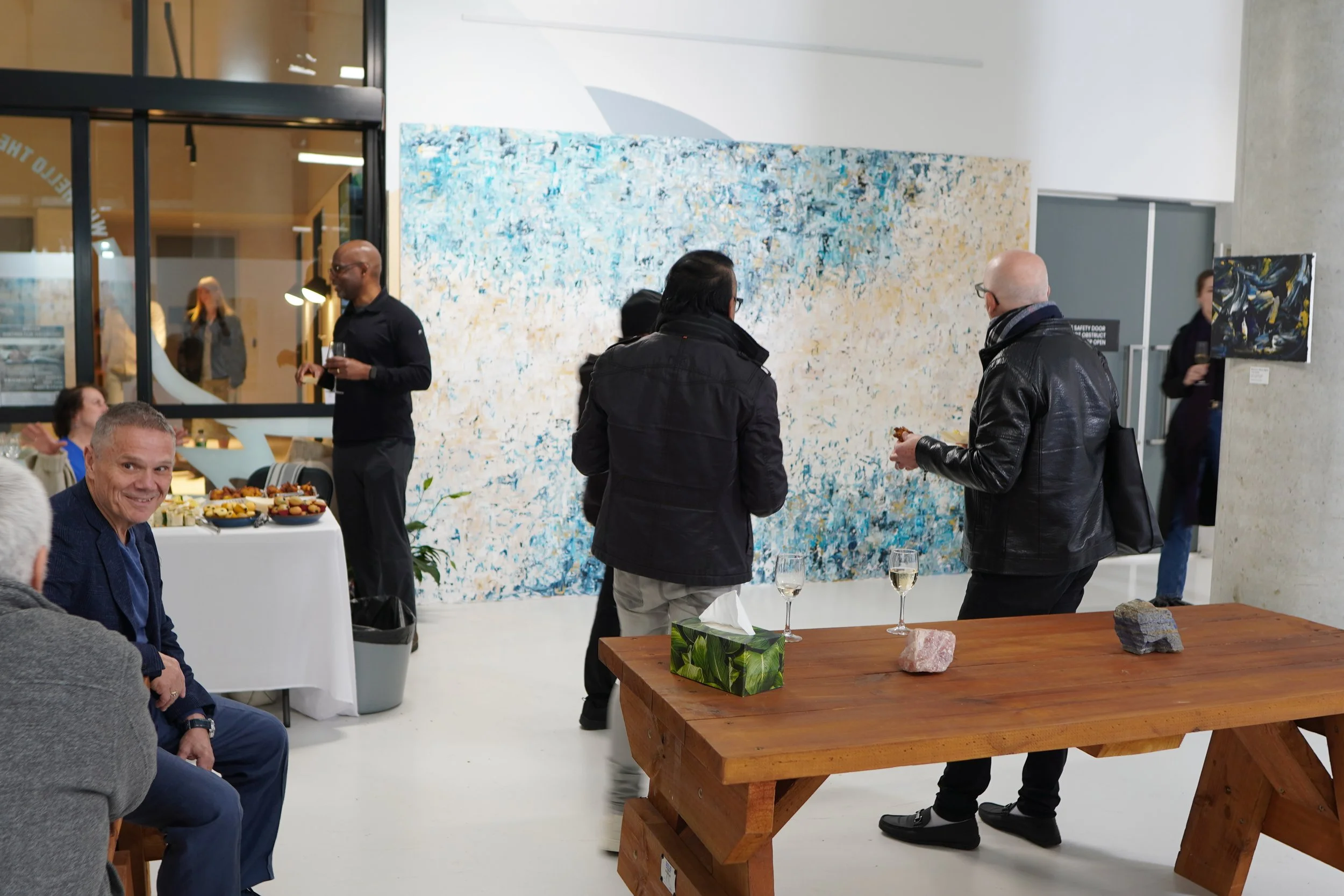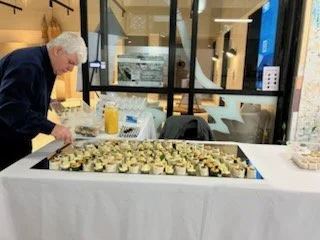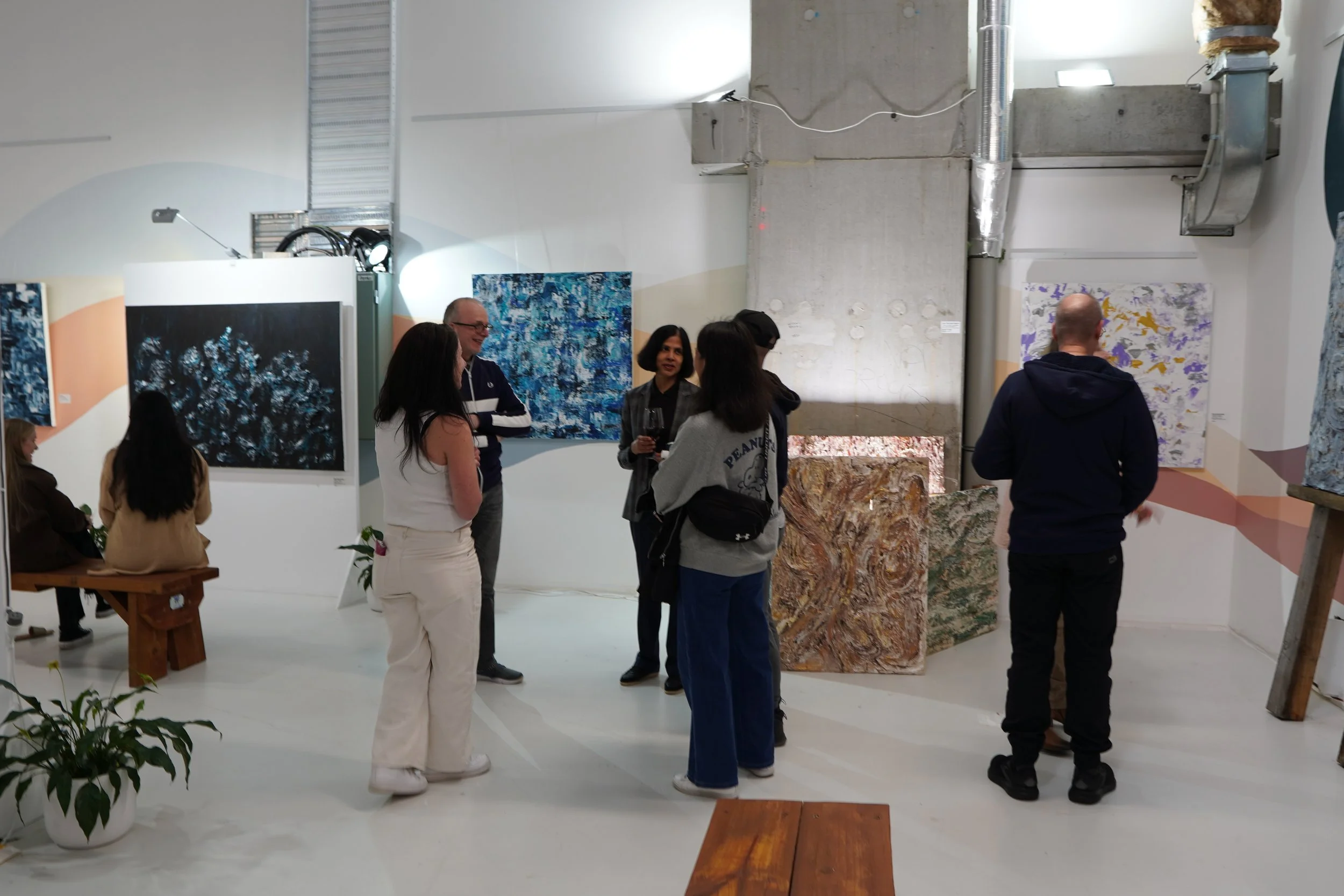Between Two Worlds: An Artist’s Reflection on Italian Heritage, Identity, and the Myth of Romulus
As an Italian-Australian artist, my connection to culture isn’t through language or tradition, but through survival, resilience, and art. In this reflection, I share how my family’s migration story, and the myth of Romulus, inspired the foundation of the gallery and continue to shape the work I do today.
1.
My Grandparents didn’t Leave Italy, even though they Spent the Rest of their Life in Australia
My grandparents came to Australia after World War II. They didn’t leave Italy by because it had always been the plan. The islands of Sicily they lived on had been bombed and devastated by war; poverty, hunger, and instability necessitated their departure. The men arrived first, working until they could afford to bring their wives. Each had limited primary school education, no English, and carried the grief of leaving behind loved ones and their homeland.
This legacy of displacement runs through my blood. I carry their story not in the Italian language, which I never fully learned, but in the resilience and resourcefulness passed down through generations. Even in Australia, my parents didn’t complete high school, though they had the opportunity, unlike their parents to attend some high school. Everything I’ve done has grown from the ground up, shaped by what my family survived and their best efforts with what they had to work with. And the generations it’s taken to navigate.
2.
Australia Gave us Space and Opportunities to Exist and I Haven’t Always Known How to Belong
As the grandchild of migrants, I often felt caught between two worlds. My parents remained closely connected to their parents’ world and I couldn’t do the same. I wasn’t fully Italian, even though I was constantly reminded I had “100% Italian blood.” I didn’t speak the language fluently or follow every cultural expectation from their generation. And I wasn’t fully Australian either. Our food, our stories, our values, way of home life, and daily obstacles were different.
It’s hard to get clarity about the reality of what life was like for my grandparents and my parents. From what I’ve managed to gather, all my grandparents were born and raised on the islands of Sicily and came to Australia out of necessity. My truth has been shaped more by what I witnessed: their grief, the pain of leaving home, and the complex challenges of figuring out how to build a new life with no roadmap, no English language, no money, hard work, trying their best and faith in God.
My parents were born in Australia but raised in households steeped in 1940s Sicilian values. They inherited a world they were not born into. And I watched them try navigate both cultures the best way they knew how; always always proud to be Italian and devoting their lives to their family.
That pride was their strength and my tension. I’ve only ever truly felt like I belonged in art galleries, or in studios where I could create. And before that, in libraries, where the presence of books calmed me.
My identity as an Italian-Australian exists in a complex, often unspoken space, one it would make sense to me that many of us from migrant backgrounds live in but rarely know how to name. Personally, it’s in this nameless in-between that I’ve found my voice. Art is how I express what doesn’t fit neatly into categories. It lets me express my truth without words and gives me endless, dynamic ways to reflect the evolving nuances involved in the life experience.
3.
Romulus: The Myth and My Reality
I named the gallery Romulus Folio because I’ve always been drawn to the myth of Romulus and Remus; two brothers abandoned at birth, raised by a she-wolf, and went onto to build a city of art from nothing.
I absolutely love the city of Melbourne. I love art beyond measure, and how the arts shapes a city. To me, the Romulus myth is about both of those things but also exile, survival, and radical creation.
That myth echoes the reality of so many migrant families like mine: unable to remain where they were born, surviving by instinct, and quietly building something new in unfamiliar places. Just as Romulus built Rome, I, in my tiny way, have collaborated with others to build Romulus Folio, an open studio gallery and dynamic arts hub born from my residency at The Gladstone in South Melbourne.
It’s a space for art, community, and intercultural inclusion, that also holds space for people like me, who don’t always fit the mold.
4.
My Italian-ness is in the Making, not the Mold
I don’t speak Italian fluently. I’ve never even been to Italy and I can't wait to be in a position to be able to experience it. Nonetheless, my connection to my heritage is real, not in language, but in spirit, in art, in the materials I use, and in the improvisational legacy passed down through my parents and grandparents. Each has, and those that have passed, had an expertise in this.
The current exhibition at Romulus Folio Gallery, titled Winter, draws directly from how they built things: with whatever was at hand. Pieces included are created from upcycled shipping pallets and removable interior walls, reflecting both practicality and transformation. While they built homes, I build with paint, memory, and gesture.
This isn’t a romanticised version of heritage. It’s real. It’s tactile. It’s mine.
The art becomes the viewers’ and who they share it with. And I love that. What comes from my story, is transformed by what meaning and significance it has in others stories.
5.
Embracing Complexity and an Unexpected Reminder
A few days ago, I received a message from SBS Italian inviting me to be interviewed. I was happily surprised and curious. All correspondence was in English. Once it became clear I didn’t speak Italian, the invitation was withdrawn.
It stirred more emotion than I expected. Not disappointment exactly, but feelings of failure on my part and quiet grief. A reminder of just how layered, challenging and complex my relationship with heritage really is.
It would mean the world to me to be accepted into the broader Italian community in Australia. But that connection has never come easily or naturally. I know I mustn't be alone in this, many others from migrant families navigate this terrain. And it's endlessly nuanced, delicate, personal and hard to articulate.
I’ve never been able to travel to Italy, but I can't wait to be in a position to change that. I’ve struggled with language my whole life. Even learning English was difficult. Despite earning a PhD in Creative Writing with support, I still face challenges with spelling and grammar due to the way C-PTST and neurodivergence impact me.
Living between two cultures, and not fully identifying with either, can be painful. I’m lucky I have art. Art is the place where contradictions can live. Where identity can transcend language, place, and expectation. Art is where I can feel true in saying this is who and what I am and where I belong and belong with others in that space.
6.
A Family Gallery
My family is incredibly proud of Romulus Folio Gallery. It’s named not only after the myth, but also after my father. Over time, my family have become part of the community forming around the gallery. Scott Ross, of Scottish heritage, who runs the gallery with me; The Gladstone who support us in ways that make it possible to do this, are also proud of what we, together contribute to make our program happen. Already, it’s a space made of beautiful memories, connection, community and pride.
My mum and dad prepare the food for our exhibition openings. My father, now a retired chef, treats food like the art his spreads are. My mum has perfected the art of Italian donuts, sfingi. My cousin Joey, always impressively dressed to match the theme of each show, welcomes guests with warmth and flair. He’s theatrical and joyful, and it fills me with a smile every time he walks through the door. My brother Joseph, thoughtful, incredibly intelligent and generous, is a continuous source of valuable advice, has a piece in the Winter exhibition, from taking our painting workshops.
Through Romulus Folio, I’ve got my heart set on creating a space where others can increasingly tell their stories too, not just the tidy ones, but the layered, difficult, beautiful ones. We’re continually working on this behind the scenes. Scott who runs the gallery operations, and I, are dedicated to this because we think it's beautiful that intercultural inclusion doesn’t mean fitting into a template. It means showing up as you are, with everything you’ve lived.

